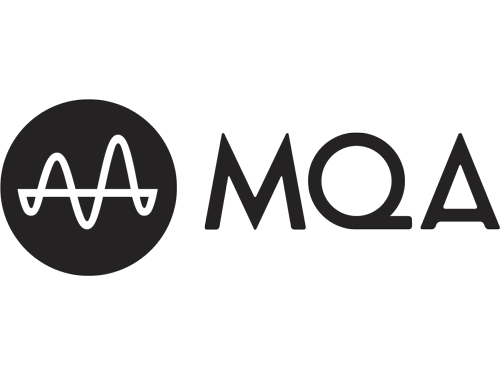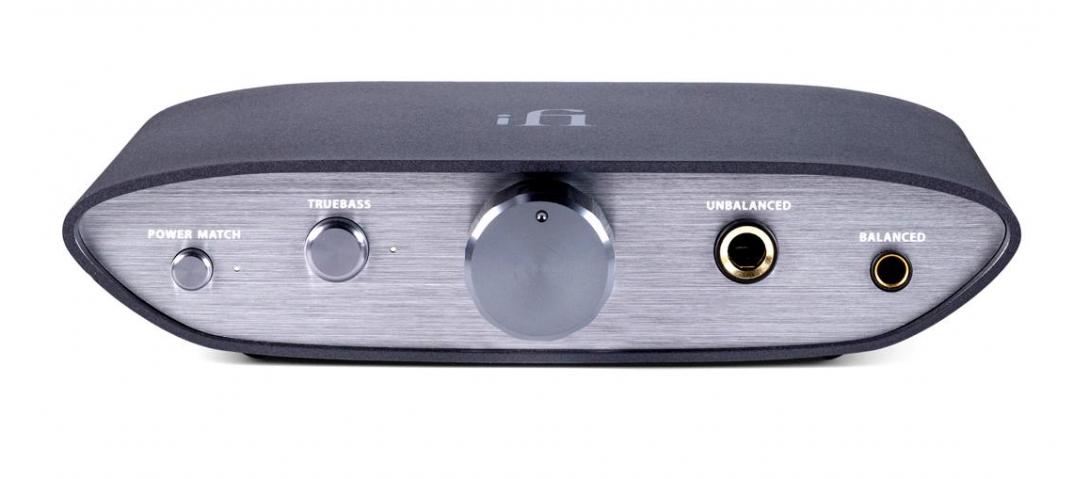The Zen of Formats
Customers have been champing at the bit to get hold of the new iFi Zen DAC, so what’s the deal? It could be love at first sight as the 60’s retro-chic design is audacious and exciting, the capabilities are comprehensive, the price point ever so appealing, and of course the brand inspires extreme loyalty.
Once you open the box and slip the device out of its protective sleeve it has an impressive heft in the hand, weighing in at just over one pound, and the one-piece metal case has an attractive matt sheen feel. Also in the case are a quick-start guide, warranty paperwork and a pair of phono interconnects. While the device has an input for a 5 volt DC supply, as it’s bus-powered from a computer all you get in the box is a solid blue USB 3.0 lead - enhanced Type B end for the DAC and Type A for the computer (it is all backwards USB 2.0 compatible however). There is the possibility of adding a low noise iFi external PSU, including iPower and iPowerX, which is a recommended option for optimum performance.
| TECHNICAL SPECIFICATION | |
|---|---|
| Chipset: | Bit-Perfect DSD & DXD DAC by Burr Brown |
| Formats: | 44.1/48/88.2/96/176.4/192/384kHz PCM - 2.7/3.1/5.6/6.2/11.2/12.4MHz DSD - 353/384KHz DXD |
| Input: | USB3.0 B Socket (USB 2.0 compatible) |
| Output: |
Audio RCA L/R, 4.4 Balalnced Lineout, 6.3mm Headphone, 4.4mm Balanced Headphone |
| Power Source: | DC 5V |
| Dimensions: | 158 (l) x 100 (w) x 35 (h) mm |
| Weight: | 491g (1.08 lbs) |
| Price: | £129.00 |
As a computer-connected interface the Zen DAC makes a well-suited visual complement to the likes of an Apple MacBook and hooking it up is a joy, the process being completely driverless. Just select ‘iFi (by AMR) HD USB Audio Output’ in the ‘Sound’ pane of System Preferences. The Mac has no problems powering the DAC by itself, even using its own battery. Here’s a little secret - using a lightning adapter even an iPhone 11 Pro has the juice to power this DAC!

As the Zen is an MQA-capable device it is highly likely that the first thing you will do is fire up the desktop Tidal app, and the ready integration when you do is impressive. The app tells you an MQA device has been detected and suggests you update your Tidal output settings accordingly. Once ’tis done it informs you it is set to ‘Exclusive’ mode and it has managed the volume level set for safety reasons.
Using the Zen as a headphone DAC is a joy - selecting one of Bob Stuart’s legendary ‘White Gloves’ exercises, the ‘Fairytales’ album, the MQA light behind the volume knob turns the indicative magenta, and the sound emerges from the darkest of backgrounds with every nuance of that delicate voice with the notes and movements of the piano player readily apparent.
Streaming using Qobuz is just as simple - you just switch the output setting at the bottom right of the screen to the iFi and you’re away. The deep bass growls of ‘I Don’t Remember (Alternative version)’ from Peter Gabriel are just the same in 24/48 as they were in Tidal MQA, but the light is green for plain PCM this time (above 24/96 - including 24/384 DXD - this goes yellow). The only other front panel options are ‘Power Match’ and ‘TrueBass’ to be used according to taste. The rear panel bears a ‘Variable/Fixed’ output switch, dependent on whether you are using the Zen as a headphone amp or feeding a hi-fi system.
Of course, if you wish to hook the Zen DAC to your hi-fi you can remove the thoughtful rubber covers from the phono outputs and use the supplied leads or those of your choice to get going. For the more demanding audiophile, balanced options are available, for headphones via Pentaconn 4.4mm analogue on the front, or by breaking out to XLR or other connectors via 4.4mm analogue on the rear.
DSD playback is one the other appealing capabilities of the Zen DAC and so switching to the reliable Audirvana application to playback some DSD64 .dsf files, the volume control lights up cyan this time. Step up to DSD256 and the colour will be blue but unfortunately, Audirvana is not capable of this natively. This is where some of the tweakier options that iFi clues us into coming into play.
So far everything is as it just works out of the box. There is an option to start adding specific iFi firmware - using version 5.2A ‘Limoncello’ adds the capability of sending DSD256 as DoP (DSD over PCM) to aid Mac and Linux users of the device. If that is not your thing there is the option of using version 5.3c ‘Cookies and Cream’ to make use of the relatively recently introduced GTO (Gibbs Transient Optimisation) digital filters and see if you prefer the latest iFi approach to digital filtering. Check the iFi website for details
This is why the iFi Zen DAC is such a desirable interface - it simply plays everything natively, or with appropriate processing (in the case of MQA) with zero effort, keeping everything bit-perfect - really a joy to own and use.
You can find more info on the iFi Audio Zen DAC Desktop USB DAC HERE.

